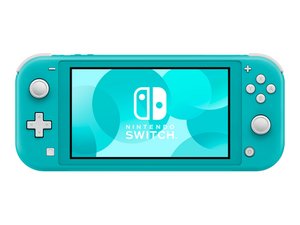Hi @eduardobau50221
Do you have a DMM (digital multimeter) and know how to use it?
If so then the first thing to do when you have a device that shows no signs of any power is to check if power is getting from the external power source to the motherboard. No power to the board means it won't work or can charge the internal battery
In this case it is via a USB-C port.
Use a strong light and a magnifying glass to check if the USB-C port is OK i.e. appropriate power pins not damaged or missing on the input side of the port and that the pins on the port output side are securely soldered to the motherboard.
Here's a link showing the pinout for a USB-C port.
Here's the ifixit Nintendo Switch Lite repair guide that may help to gain access to the internal components.
If the port is OK you will have to use the schematic for the board to start testing along the power supply path to see where it goes. Unfortunately, I can't find any online, (you may have better luck) so you will have to visually trace the path from the VBUS (and GND) pins in the port to see where they connect to and start testing the components along the path.
Without a schematic or a board layout diagram to know the type of component and its specifications it will be difficult to identify any board component that is connected to the input power rails to know what type of component it is and therefore what it should test if it is OK or not,
You may be able to identify any ICs which have their type number stamped on the case by searching for the datasheet for the IC but unless the smaller smd components have a board designation next to them on the board, e.g. F, FB, D, C, R, L etc (and mostly nowadays they don't) without the schematic (and a boardview file) it will be difficult to know
If you have another working Switch Lite device it would make it a bit easier to identify as you could measure the component with the Voltmeter or Ohmmeter function of the DMM to compare it to the same component in the faulty device to check if it is OK or not and to hopefully identify it, if it isn't. Welcome to the world of fault finding in electronic devices, without having a schematic ;-)



 11
11  374
374  1.5k
1.5k 